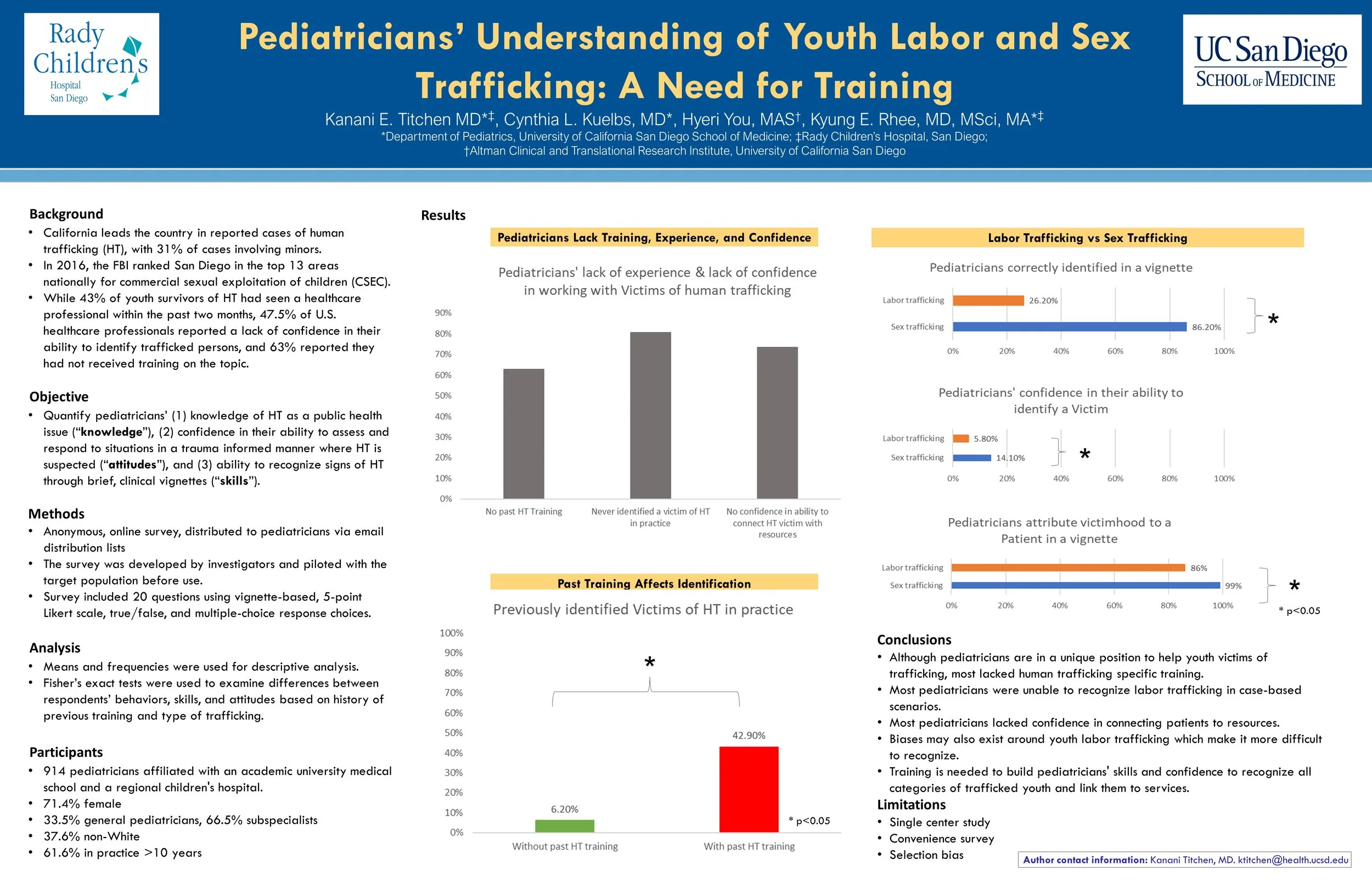Poster #2
Pediatricians’ Understanding of Youth Labor and Sex Trafficking: A Need for Training
By: Kanani Titchen, Cynthia Kuelbs, Hyeri You, and Kyung Rhee
Abstract:
Human trafficking is an extreme form of interpersonal violence that leads to serious health issues. Although most trafficking survivors report accessing healthcare while being exploited, many U.S. healthcare professionals report an inability to respond effectively. We surveyed pediatricians at an academic children’s hospital to quantify their (1) knowledge of trafficking, (2) ability to recognize different types of trafficking, and (3) confidence in connecting victims of trafficking with resources. The online survey used vignette-based, Likert scale, true/false, and multiple-choice questions about trafficking. Of 914 pediatricians surveyed, 206 responded (22.5%). Most respondents had not received training about trafficking (62.8%). Only 26.2% of respondents correctly identified labor trafficking in the vignettes, whereas 76.2% correctly identified sex trafficking. Previous training was not associated with a greater likelihood of recognizing sex (p=0.52) or labor (p=0.88) trafficking in these vignettes. Most pediatricians (80.6%) reported never identifying a victim of trafficking in their practice. However, respondents with past trafficking training (n=77) were more likely than those without training (n=129) to report identifying victims of trafficking in their practice (42.9% vs 6.2%; p<0.001). Few reported confidence in their ability to identify a victim of labor (5.8%) or sex (14.1%) trafficking, and 73.3% lacked confidence in their ability to connect a victim with needed resources. Of 204 respondents, 99% attributed victimhood to youth who were sex trafficked, while 86.6% ascribed victimhood to labor trafficked youth (p< 0.001). Although pediatricians are in a unique position to help youth victims of trafficking, most lacked training, were unable to recognize labor trafficking in case-based scenarios, and lacked confidence in connecting patients to resources. Biases may also exist around youth labor trafficking which make it more difficult to recognize. Training is needed to build pediatricians' skills and confidence to recognize all categories of trafficked youth and link them to services.

